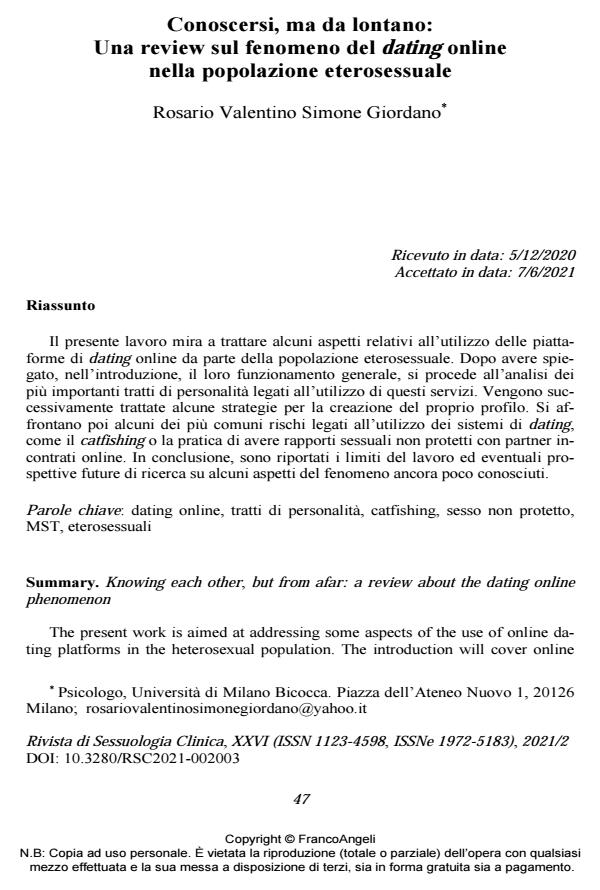Knowing each other, but from afar: a review about the dating online phenomenon
Journal title RIVISTA DI SESSUOLOGIA CLINICA
Author/s Rosario Valentino Simone Giordano
Publishing Year 2021 Issue 2021/2
Language Italian Pages 19 P. 47-65 File size 214 KB
DOI 10.3280/RSC2021-002003
DOI is like a bar code for intellectual property: to have more infomation
click here
Below, you can see the article first page
If you want to buy this article in PDF format, you can do it, following the instructions to buy download credits

FrancoAngeli is member of Publishers International Linking Association, Inc (PILA), a not-for-profit association which run the CrossRef service enabling links to and from online scholarly content.
The present work is aimed at addressing some aspects of the use of online da-ting platforms in the heterosexual population. The introduction will cover online dating apps general functioning. Then, we will proceed with the analysis of the most important personality traits linked to the use of these services. Then some strategies for the creation of one’s own profile are treated and finally. the most common risks associated to the use of dating systems, such as catfishing or the practice of having non-protect sexual encounters with partners met online. In con-clusion, we report some limits of this work and possible future research perspec-tives on some aspects of this phenomenon.
Keywords: online dating, personality traits, catfishing, unprotected sex, STD, het-erosexual
Rosario Valentino Simone Giordano, Conoscersi, ma da lontano: Una review sul fenomeno del dating online nella popolazione eterosessuale in "RIVISTA DI SESSUOLOGIA CLINICA" 2/2021, pp 47-65, DOI: 10.3280/RSC2021-002003